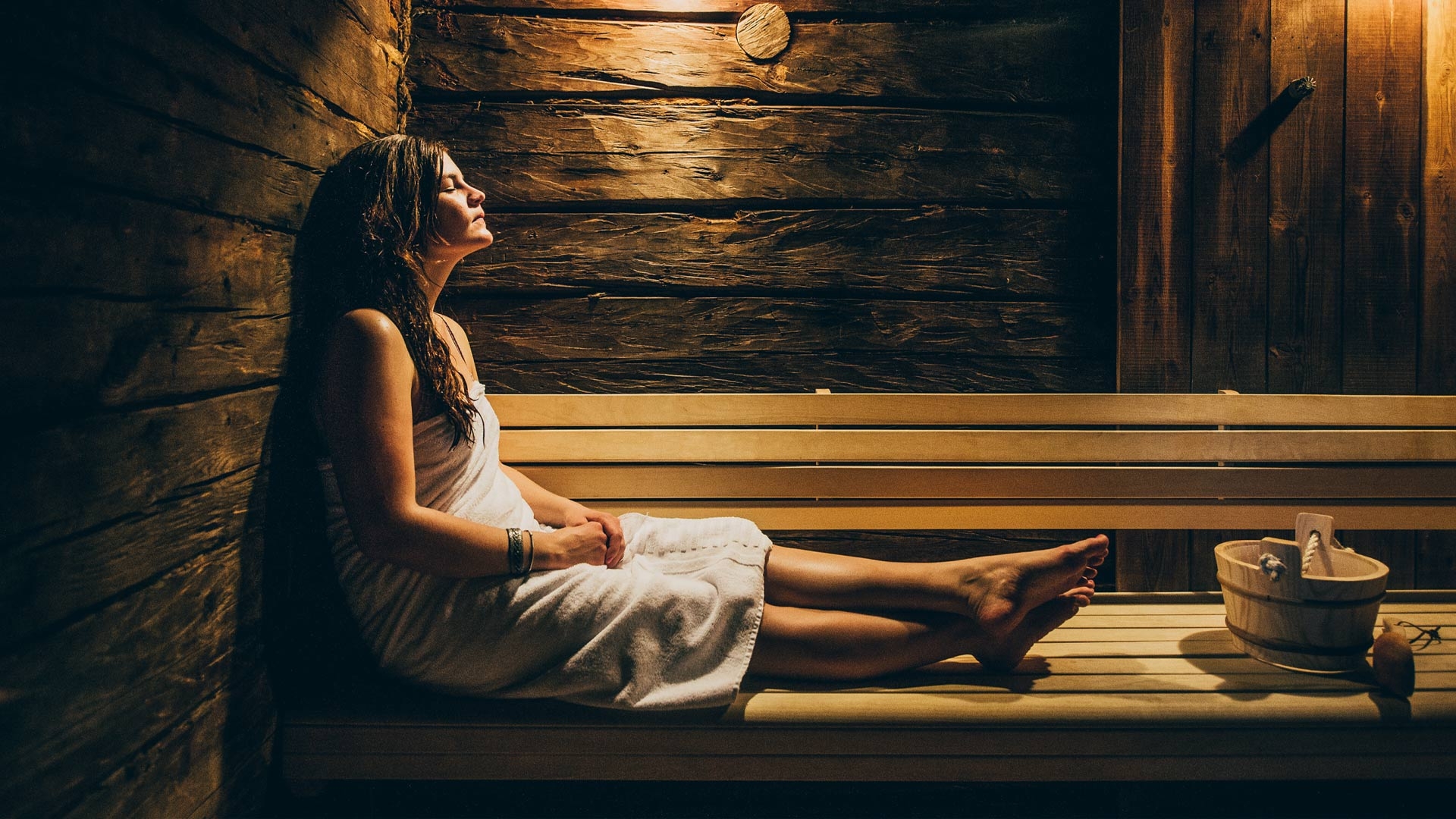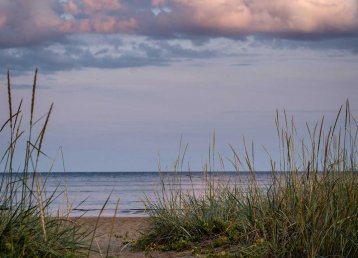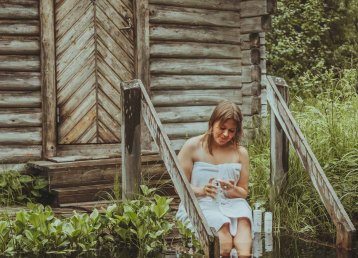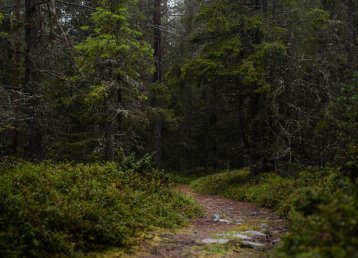Sauna Academy
“In sauna there is truth”, at least that is what the Swedish Sauna Academy claims with its slogan: In sauna veritas. But if you grew up with sauna talk at home as well as at the public baths in the north, you are well aware that you had better take most of it with a pinch of salt. Fishing stories are exaggerated even in the sauna, for sure. Not to mention the amazing story in Popular Music from Vittula, by Mikael Niemi. It was a sauna session where the young protagonist thought his father was about to tell him about all the most embarrassing things in a teenager’s life, the facts of life. But as it turned out, his old man just wanted to tell him about which families their own family were feuding with and that he should avoid – an epic twist of a story.
The Sauna Academy was founded in Jukkasjärvi, at the inn that is nowadays known as Icehotel. It was in a way obvious that it would be established along the Torne River: there is a strong sauna culture here. Calling it an academy is all about purpose: the founders wanted to spread good sauna culture to the world. The Swedish Academy also got its first assets from the salmon fishing in the Torne Valley. It is a touch of history having two academies: one for genius and taste and one for well-being, founded at the Torne River. These days the Sauna Academy’s headquarters are located at the Kukkola Rapids. Apart from the obvious location in the Torne Valley, placing it in Kukkola was the right thing to do, as there is a sauna museum here and at least 13 different sauna facilities. And at Icehotel you can nowadays take a sauna, even if you are staying in a cold room. The Icehotel 365, the only Icehotel in the world with cold rooms even in summer, has its own sauna for some of the suites. Even in the midst of ice, a sauna is central.
Essentials
In the Torne Valley, saunas were something essential. The place where you were born, but just as often the place where you were placed in wait of final rest. The smoke sauna, a Torne Valley special, was a clinically clean spot. Bacterially speaking, that is. As you exit with a bit of soot on your hands and buttocks, with a light smell of sauna-smoked sausage clinging to you, this is a good thing – all the bacteria died the soot death in there before you stepped inside.
On a summer’s eve, I try a smoke sauna with Martin Spolander, CEO of Kukkolaforsen, who explains the procedure.
— The smoke sauna can be called an ancient sauna. The house itself has no chimney, and as the fire is burning, all the soot and smoke stays inside.
— The important thing is to make sure you have a large number of rocks that are heated up and retain the heat for a long time. Because when the sauna is hot, you open it up to get rid of the smoke and then you have a sauna-like you would in a normal sauna.
After the smoke sauna, we take a shower and step into a regular sauna. Martin has moved to Kukkola from outside, but he has embraced the Torne Valley’s sauna culture.
— I had no choice if I wanted to stay here, he says and laughs as he throws some water on the stove pipe, making it hiss and steam.
— But now I have learnt to appreciate a good löyly.
Löyly
Everything is about comfort, about löyly. But the decision-makers in Sweden in the 18th century were not aware of this fact. They thought a sauna was a place of sin where syphilis was spread, so in 1725 saunas were banned in our country (a ban that has actually not been lifted to this day). In northern Sweden, in Finland and Russia, this ban was, of course, promptly ignored, and they kept their saunas. They needed to stay clean and to get a moment of relaxation. And nowadays, the sauna is so much embedded in the Finnish culture that it is declared a UNESCO world heritage for our neighbours.
The most important aspect of a sauna is its atmosphere or löyly. Sure, it is hot and sweaty, but it has to be in a comfortable way. To create this comfort, there are a few things to keep in mind. For example, it is important to always use the right material for a sauna. Spruce is commonly used for the panelling inside the sauna, but it is not a good material to make the benches from. Spruce tends to release resin, and sitting on the hot resin is not all that nice. Pine has also been used traditionally – there is plenty of pine in the north – but it tends to bend. Pine is not that durable, either. Aspen is cheap and relatively clean. Since it is quite a hardwood, it might crack, and it also becomes hot, so if you want a pretty aspen piece, you have to go for good quality. Alder is the backbone of sauna construction in Finland, and its slightly reddish colour also provides a very nice interior. Cedar and eucalyptus are a bit more ‘exotic’ choices and not exactly locally produced, but still a common choice for saunas all over the world. If you go for alder for the benches and spruce for the panelling, you come close to the Arctic ideal. A good thing to keep in mind when making the benches is to put the screws in from below. Sitting on hot screws is very bad löyly indeed.
Healthy?
But even if the whole world is using warming bathing facilities, it does not answer whether it is actually good for us humans. Dr Hans Hägglund is responsible for the sauna lab that has just been built at Sunderby Hospital to study people’s health and well-being scientifically. Hans Hägglund himself equals a sauna to vascular gymnastics. He has released a book about this, called “The Sauna Book – Hot Facts about Saunas and Health”. There are more than 500 studies written in English on sauna bathing and the impact of spa culture on health. The largest is from Finland, where 3,000 Finnish men were interviewed initially, and since then, their health has been monitored in a big study on what was once called the poor man’s pharmacy.
— You can see that a sauna visit provides the equivalent exercise to a walk, a light jog or light swimming.
— All the results of the Finnish study and other studies show that regular sauna visits reduce the risk of dying from cardiovascular disease as well as dementia and stroke, and it basically halves the risk of developing high blood pressure.
— You can also see that people with chronic diseases, such as heart failure, also improve their heart function. But this needs to be studied more in detail.
And what about healthy people?
— The sauna is a good way to keep fit.
Saunas of the world
Perhaps a smoke sauna does not sound tempting at first, with that smell of sauna-smoked sausage. But still, the smoke sauna was a big part of the possibility of Arctic life. There are saunas all over the world, and we have even imported the Turkish steam bath to the Arctic environment: at spas and water parks in Kiruna, Boden, Luleå, Harads, Piteå and other places you can take a steam sauna inspired by the Mediterranean Hammam. Because sauna bathing is deeply ingrained in their culture, too. If a Turkish man forbade his wife to have a sauna, it gave her the right to divorce. Hammam, the culture around bathing, comes from the Roman Empire and its thermae, or hot baths. Japan has its hot spring baths, so-called ryokans, and they are popular places to visit too, by all rights. But as usual, it is the ancient Greeks we go back to when we speak of the origin of the emerging spa culture. In the beginning, Greeks took cold baths too, but in the village Laconica, they found it uncomfortable and brought heated water in. These laconican baths became famous and spread. Since Laconica is located in the province of Sparta, you could say this is where the whole spa culture begins. But the town Spa itself, in Belgium, would not be pleased about it so that we will leave it there. Closer to us in Swedish Lapland, there are the Finnish saunas and the Russian banyas. This steam bath, banya, has a central place in Russian culture. When the Russian artist Boris Kustodiev was to paint a Russian Venus, she was depicted as naked in a banya, holding a leafy branch. Just like we are tonight.
A sauna potpourri
Over the years, there has been a lot of sauna bathing going on at this destination. As I start reminiscing on special moments, other than the everyday kind, these are some I am left with:
• In the mountains. A day in late summer, when I had hiked the King’s Trail from lake Tärnasjön up to the high plateau where the mountain cabin Aigertstugan is located, I lit a fire in the sauna, sat down and watched the Vindelfjällen mountains bathe in the light from the sun setting. There are several good saunas along the King’s Trail, plenty of them.
• Mooring a sauna. When we had rented the ship Älvkungen in Sorsele, skipper included, and an hour later moored the boat to Janne Sorsén’s floating sauna raft in Forsnäs. Summer nights of a kind that will never come back are meant to be enjoyed in an intense here and now.
• Having a sauna in a cold suite at Icehotel 365 is almost a given; the sauna is an almost central part of the growth in tourism here and the establishment of the Sauna Academy.
• I really do not mind paddling out to Aurora Safari Camp’s sauna raft on the Råne River either. If I feel confident, I dive the raft’s roof terrace. Otherwise, I opt for a ‘cannonball’. Refreshing, of course.
• In Kukkola. Yes, I already mentioned it: I love taking a seat on a bench in a smoke sauna. There is something very special about this ancient form of sauna.
• And then, of course, the long jetty from the sauna at Båtsuoj, between Slagnäs and Arjeplog, stretching into the lake. The jetty long enough to make you hesitate the swim in the lake, but also the one giving you the motivation to run back into the sauna.
Arctic top notch
Naturally, new and modern saunas and spa facilities have emerged at the fine hotels in Swedish Lapland cities. Camp Ripan in Kiruna and Hotell Kust in Piteå are some that spring to mind. And we must not forget the old municipal bathhouses, institutions in the construction of society. Pontusbadet in Luleå is one of these public swimming pools, an architectural bull’s eye. I bike there on Friday mornings, swim for an hour, sit in the sauna for an hour and then see if I have the energy to do anything in the office before lunch. There is no coincidence either that Treehotel has seven rooms and two saunas. And that the sauna is in a central location.
But if you were to put all of this together in a single building? If you were to turn the Arctic dream of saunas into a facility, what would it look like? Perhaps architect Bertil Harström and designer Johan Kauppi have come closest with their Arctic Bath project. It is a floating cold bathhouse on the Lule River with two saunas, a spa and a restaurant. There is floating accommodation too, and rooms on dry land. A sauna lover’s dream, with a hole in the ice where you can immerse yourself in the cold between bathing sessions. Arctic Bath is simply a world-class sauna raft. Just what you expect from your visit to the Arctic.






























